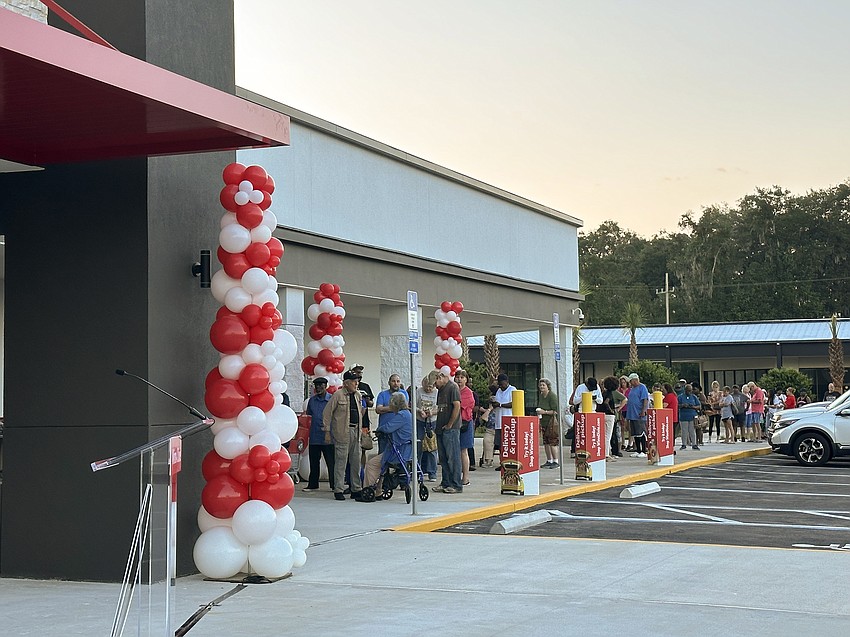
Aldi has a place in the market, but those neighborhoods have yet to be determined.
The Shelby Report of the Southeast supermarket trade publication reported in June that Publix Super Markets Inc. leads with 35.7% of the grocery market share in the North Florida/South Georgia region, followed by Walmart Inc., at 26.6%, and Winn-Dixie at almost 17%.
All others are each below 4%, with Harveys Supermarkets at 1.9% and Aldi at almost 0.5%.
Aldi’s purchase of Jacksonville-based Southeastern Grocers, the parent of Winn-Dixie and Harveys, boosts its corporate share to 19.38%.

Eric Heninger, adjunct professor of accounting and finance at the University of North Florida Coggin College of Business, said July 12 that Aldi and Southeastern Grocers are at different points in their existence.
Aldi, founded in Germany in 1961, opened in the U.S. in 1976, less than 50 years ago, and its first in Jacksonville in 2015. Its U.S. headquarters are in Batavia, Illinois.
Winn-Dixie patriarch W.M. Davis established a grocery store in Miami in 1925, growing the business before moving headquarters to Jacksonville 80 years ago in 1944, eventually labeling the chain as The Beef People.
Winn-Dixie acquired the Harveys banner in 2013.
“It’s a classic take of two business cycles,” Heninger said.
“Winn-Dixie/Harveys is well beyond the maturity phase and on the downside. And then you have Aldi, the mirror image in the heart of its growth phase,” he said.
He said Aldi is the fastest-growing brand in the value segment.

Heninger said both companies focus on the value customer, but Winn-Dixie shoppers now will benefit from innovation.
“Aldi, being on the growth side of the cycle, is innovating,” he said.
“The beneficiary of that will be the customer,” he said.
Winn-Dixie was not innovating, he said. After Southeastern Grocers agreed in August 2023 to sell to Aldi, the attention to store detail “was nowhere it used to be.”
Heninger said Aldi will have an easy time converting Winn-Dixie customers.
“Nine out of 10 customers who are not sure will be thrilled and never think of Winn-Dixie again,” Heninger said.

“There will be the one holdout that loves the Winn-Dixie days of their beef commercials,” he said.
Kate Clifford, broker-owner of the Jacksonville Beach-based Strategic Sites Clifford Commercial real estate firm, says Aldi has a place in the market, “but not every market/neighborhood.”
“It is an economic alternative that appeals to many. However, I am a ‘foodie’ and want what I want when I want it. I cannot plan a menu and expect that I will be able to buy everything in one stop,” she said.
Publix could benefit
Clifford said she will miss the Winn-Dixie near her home if it converts, and would expect to visit Publix more often.
Heninger said Publix has had an enviable market position and “could take shots at Whole Foods and Fresh Market,” two niche grocers focusing on fresh and organic meats and produce and other perks.
“Publix now has someone kind of nipping at their heels, their market share and their margins, and that will only do good things for Publix,” he said.
He expects Lakeland-based Publix to respond to the competition from Aldi.

Heninger thinks Aldi would be more apt to keep the Harveys brand than Winn-Dixie, but that remains to be seen.
“They probably already have a plan,” Heninger said. “They probably have a combination of metrics that gives them a score.”
Heninger said housing density, traffic intersections and average daily traffic counts are among the factors.
One question is whether Aldi can support stores that are relatively close to one another.
For example, in some areas, Publix spaces its stores 3 to 4 miles apart, and even closer in some neighborhoods.
Heninger expects that Aldi knows which locations it will convert.
“There’s no indication they are giving up anything from this acquisition.”
Another possibility is that with more Aldi-owned stores, the company might establish a bigger operating presence in the area, which would allow it to share services and scale the growth.
More Aldi stores “might allow Aldi to put in a regional hub,” Heninger said.
“Any cannibalization will be offset by economies of scale.”

The Walmart factor
Then there’s Bentonville, Arkansas-based Walmart, the world’s largest retailer with 2023 global revenue of $611 billion.
Aldi’s purchase of Southeastern Grocers puts it in stronger competition with discounter Walmart and its Walmart Neighborhood Market stores, which hold a solid second place in North Florida/South Georgia regional market share, according to the Shelby Report.
In addition to Walmart’s almost 26.6% of the market, its Sam’s Club division holds almost 3.1%, taking the retailer to almost a 30% share.
Heninger expects that Walmart “would try to mitigate the competition by the 80/20 rule.”
“Walmart would determine Aldi’s top 20% of sales categories, then Walmart would beat them on that 20% in terms of price and allow Aldi to operate freely within the bottom 80%,” he said.

“But Aldi is hard to beat on price. Unless it’s late-night necessity, a value-oriented grocery shopper will presumably choose Aldi over Walmart to avoid the warehouse vibe, disorganized parking lots and perceived security issues.”
Heninger said Aldi probably poses a bigger threat to the five Walmart Neighborhood Markets in Jacksonville. Corporate.Walmart.com says those markets average about 38,000 square feet, about a quarter of the size of the average Supercenter, although Walmart is opening larger ones.
The markets operate more as typical grocery stores.
There also are two in St. Johns and Clay counties.
“Walmart is looking to expand these store types by building new as well as existing store conversions. Walmart could respond with cross-marketing to their Supercenters and direct placement next to Aldi of a new Market Center on the opposing corner,” he said.
“Walmart would win a battle of attrition and would not be as sensitive to market cannibalization. The competition, in large part, would come down to the art of site selection (including local neighborhood public sentiment).”